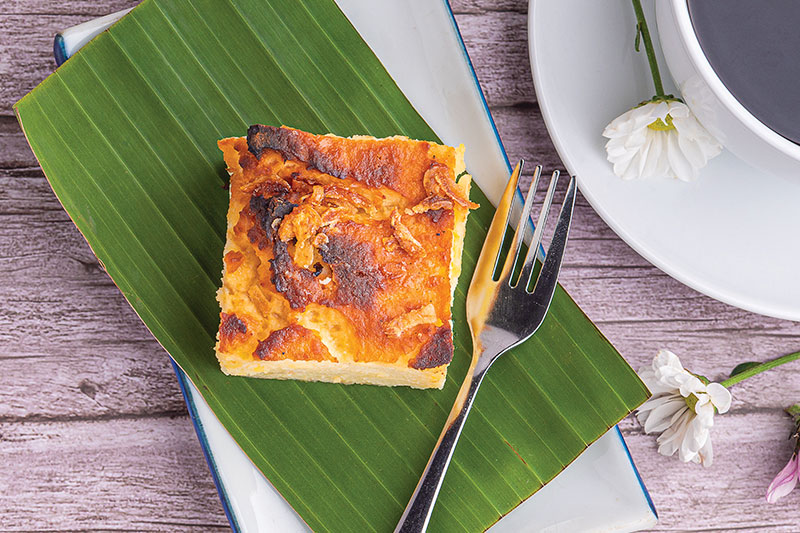
A Taste of History
First created in the 1700s, Thailand’s very own version of traditional custard, Khanom Mo Kaeng, has stood the test of changing times and tastes.
Words: Sarita Urupongsa
The traditional Thai dessert Khanom Mo Kaeng may look like a western custard, but don’t be fooled. Unlike its sweet cousin, the Thai treat is slightly savoury thanks to a topping of deep-fried shallots.
This unusual pudding has a long history. Maria Guyomar de Pinha, known as the queen of Thai desserts, served this creation in a brass pot to King Narai and his daughter Princess Sudawadi. Hence, its original name, Kumphamat, or “golden pot”.
Pinha, whom Thais know as Thao Thong Kip Ma, was a Siamese woman of mixed Japanese-Portuguese-Bengali ancestry who was born in Ayutthaya in the 17th century. She is the creator of several Thai desserts influenced by Portuguese cuisine, including Foi Thong, Sangkhaya Fakthong and Sangkhaya.
Nowadays, Khanom Mo Kaeng is usually sold in a square tin and comes in a variety of flavours, including taro, beans, eggs and lotus seed. The ingredients of this custard are fairly simple – steamed taro or bean paste, duck eggs, palm sugar, coconut cream, and pandan leaf for aroma. The custard can either be cooked over a very low fire, steamed or baked and finished off with a sprinkling of fried shallots.
Phetchaburi Reset
Khanom Mo Kaeng made a comeback in 1986 when Phetchaburi province launched a campaign to promote its Phra Nakhon Khiri Historical Park as a tourist attraction. Local communities jumped on the bandwagon and began selling the historied custard, which has now become synonymous with Phetchaburi.
